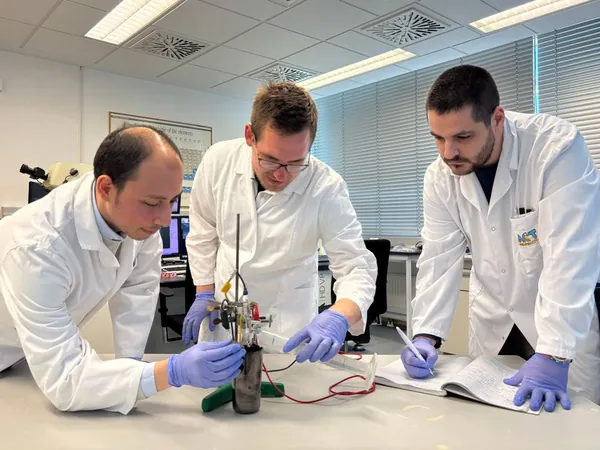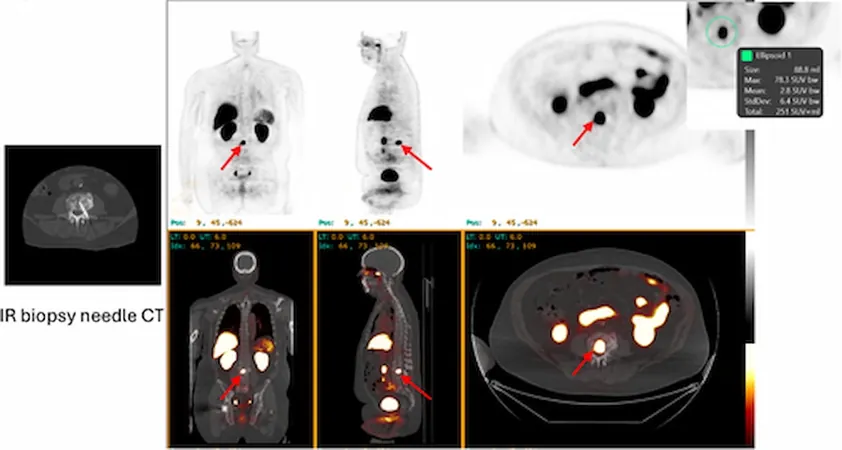
Revolutionary Non-Toxic Method to Create the ‘Miracle Material’ MXene
2025-04-16
Author: Nur
A Breakthrough in 2D Materials Science
In the fascinating realm of materials science, 2D materials consisting of just a single layer of atoms have emerged as game-changers. These materials often exhibit extraordinary properties that thicker counterparts can't match. What started with the Nobel Prize-winning discovery of graphene has now expanded to include an incredible class of materials known as MXenes (pronounced Maxenes). Recent innovative research conducted at TU Wien (Vienna) in collaboration with industry pioneers CEST and AC2T is shining a spotlight on these remarkable substances.
Why MXenes Are Generating Buzz
MXenes are heralded for their astounding applications: from electromagnetic shielding to advanced energy storage solutions and cutting-edge sensors. Impressively, researchers at TU Wien have even identified their potential as effective solid lubricants operating under extreme conditions—imagine using them in the harsh realms of space technology. However, the previous synthesis process raised significant safety and environmental concerns due to its reliance on toxic hydrofluoric acid.
A Safer, Futuristic Approach
In a groundbreaking turn of events, scientists have developed a revolutionary method to synthesize MXenes using electricity instead of hazardous chemicals. As Pierluigi Bilotto from TU Wien's Engineering Design and Product Development Institute explains, generating MXenes has always started with materials known as MAX phases, typically made up of aluminum, titanium, and carbon. Until now, hydrofluoric acid was the go-to for etching out aluminum from the MAX structure, yielding MXenes that excel in lubricating properties.
Ditching Toxic Chemicals for Electric Innovation
The alarming risks associated with hydrofluoric acid—including its toxicity and extensive regulations—have made MXene production an uphill battle in industrial settings. As Bilotto notes, the complex process of handling such toxic substances and the subsequent costly waste disposal have deterred many industries from exploring MXenes further.
Harnessing the Power of Electrochemistry
In collaboration with a stellar team including Prof. Carsten Gachot and Prof. Markus Valtiner from TU Wien, and Dr. Markus Ostermann from CEST, Bilotto has pioneered an alternative method utilizing electrochemistry. "By applying an electric voltage, we can trigger reactions at the interfaces of the MAX phases, effectively removing aluminum atoms without the need for toxic substances," he explains. This innovation has led to the creation of high-quality electrochemical MXenes (EC-MXenes) that rival their hydrofluoric acid-based predecessors.
Unlocking New Possibilities with Pulsed Current
The research team discovered that using precisely timed pulses of current significantly improves the etching process. These short bursts not only enhance the reactivity but also lead to the formation of hydrogen bubbles that clean and rejuvenate the surface of the MAX phases, ensuring a sustained production of EC-MXenes.
Promising Results and Future Aspirations
Advanced analytic techniques including Atomic Force Microscopy and X-ray Photoelectron spectroscopy confirmed that the properties of these new MXenes match, if not exceed, those generated through traditional methods. Bilotto’s ambitious vision? A synthesis process so straightforward that it could be executed in any kitchen. With this non-toxic method, the future of MXenes seems brighter than ever!



 Brasil (PT)
Brasil (PT)
 Canada (EN)
Canada (EN)
 Chile (ES)
Chile (ES)
 Česko (CS)
Česko (CS)
 대한민국 (KO)
대한민국 (KO)
 España (ES)
España (ES)
 France (FR)
France (FR)
 Hong Kong (EN)
Hong Kong (EN)
 Italia (IT)
Italia (IT)
 日本 (JA)
日本 (JA)
 Magyarország (HU)
Magyarország (HU)
 Norge (NO)
Norge (NO)
 Polska (PL)
Polska (PL)
 Schweiz (DE)
Schweiz (DE)
 Singapore (EN)
Singapore (EN)
 Sverige (SV)
Sverige (SV)
 Suomi (FI)
Suomi (FI)
 Türkiye (TR)
Türkiye (TR)
 الإمارات العربية المتحدة (AR)
الإمارات العربية المتحدة (AR)